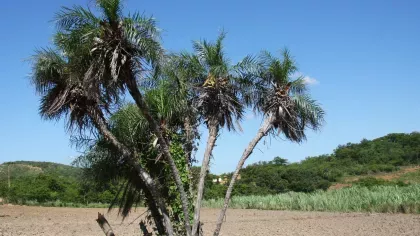
30 September 2022
Research Leader

Genome evolution, phylogenomics, biogeography, seed trait evolution, barcoding, intraspecific trait variation, palm conservation, genomes of parasitic plants, Apodanthaceae, Arecaceae, Cynomorium.
My research goal is to integrate multiple approaches to improve our understanding of plant diversity at different evolutionary scales. I have been working on the systematics and genome evolution of gorses, grasses, parasitic plants, and gourds, and I am now focusing on palms (Arecaceae) as a model to understand how genomes and environments shape diversity. Palms are a major component of rainforests and play important roles in people livelihoods, but their diversity is threatened by land-use change and climate change. In this context, I also explore how fundamental research on diversity can help preserving it.
I am using phylogenomic approaches to infer how palm genera and species are related to each other and when they diversified, focusing on tribe Areceae, which comprises ca. 700 species distributed in SE Asia and Madagascar. With the help of my students and palm specialists at Kew and other institutions, I am combining this information to data on palm environment, morphology (seed traits), and genome structure (repetitive DNA). This will allow us to better understand the mechanisms involved in the evolution of palm diversity, and to find solutions to protect and sustainably use this diversity. For instance, we are currently developing DNA barcoding protocols that will facilitate the study of palms and the monitoring of palm use, and we are assessing the potential of machine learning to identify what palm species are threatened and what regions comprise useful and/or endangered palms. In addition, I am now initiating studies to explore how we can use data on intra-specific trait variation to improve predictions of how species will respond to perturbations, and to inform actions for in situ and ex situ conservation.
If you are interested in a collaboration, an internship or a PhD, please contact me.
Bellot, S., Cusimano, N., Sun, G., Luo, S., Zarre, S., Gröger, A., Temsch, E. & Renner, S.S. (2016).
Genome Biology and Evolution 8: 2214-2230.
Bellot, S. & Renner, S.S. (2016).
Genome Biology and Evolution 8: 189-201.
Rousseau-Gueutin, M., Bellot, S., Martin, G.G., Boutte,J., Chelaifa, H., Lima, O., Michon-Coudouel, S., Naquin, D., Salmon, A., Ainouche, K. & Ainouche, M. (2015).
Molecular Phylogenetics and Evolution 93: 5-16.
Bellot, S. & Renner, S.S. (2014).
Molecular Phylogenetics and Evolution 80: 1-10.
Bellot, S. & Renner, S.S (2014).
Phytokeys 36: 41-57.